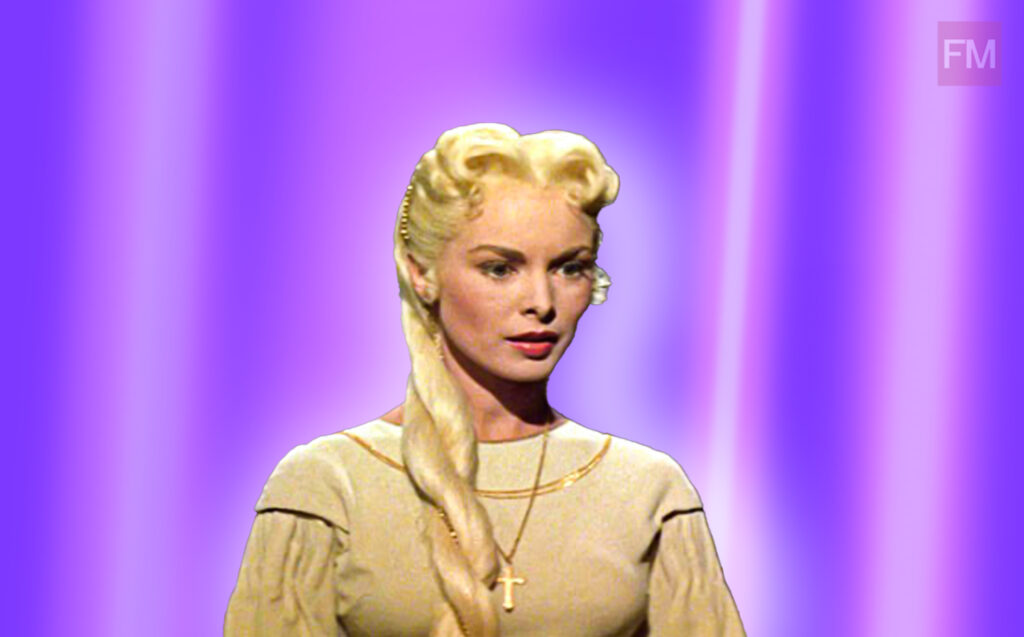The 1954 film Prince Valiant is an adaptation of Hal Foster’s beloved comic strip and tells the story of a young Viking prince on a journey to become a Knight of the Round Table and reclaim his kingdom. Directed by Henry Hathaway, the movie was filmed in vibrant Technicolor, bringing the medieval setting to life with stunning visuals. Combining historical influences with Arthurian legend, the story is a timeless tale of bravery, honor, and adventure that continues to captivate audiences.
Table of Contents
Quick Information Table
| Aspect | Details |
|---|---|
| Title | Prince Valiant |
| Release Year | 1954 |
| Director | Henry Hathaway |
| Main Cast | Robert Wagner, Janet Leigh, James Mason, Debra Paget, Sterling Hayden |
| Genre | Adventure, Romance |
| Runtime | 100 minutes |
| Language | English |
| Production Company | 20th Century-Fox |
| Based On | “Prince Valiant” comic strip by Hal Foster |
| Cinematography | Lucien Ballard |
| Music | Franz Waxman |
| Box Office | $2.6 million (US rentals) |
Plot Summary and Key Themes
Prince Valiant follows the journey of Prince Valiant, who has been exiled from his kingdom and seeks refuge in Camelot, where he aspires to become a knight and reclaim his homeland. Under King Arthur’s protection, he joins the court, encountering allies and enemies, including the mysterious Black Knight. Central themes such as honor, courage, and the quest for identity are woven into an engaging story that blends Arthurian legend with classic adventure motifs.
Cast and Character Analysis
The cast of Prince Valiant features talented actors who bring depth and charisma to their roles. Robert Wagner plays the young and determined Valiant, while James Mason portrays the cunning Sir Brack, the film’s main antagonist. Janet Leigh stars as Princess Aleta, Valiant’s love interest and steadfast support, with other well-known figures like Sir Gawain and King Arthur portrayed by Sterling Hayden and Brian Aherne. The actors succeed in making their characters come to life, enhancing the medieval atmosphere and adding to the film’s allure.

Production and Cinematic Techniques
Prince Valiant leverages the advanced CinemaScope technology of the 1950s, which adds exceptional visual depth through expansive landscapes and rich colors. The detailed design of medieval costumes and elaborate sets lends authenticity and creates a visually striking style. Franz Waxman’s musical score underscores the cinematic atmosphere, enhancing the sense of adventure and romance that permeates the film.
Reception and Critical Analysis
Upon its release in 1954, Prince Valiant achieved moderate box office success and received mixed reviews. While its visual effects and impressive staging were widely praised, the film’s narrative depth received some criticism. Some reviewers felt the storyline was simplistic, while others appreciated its faithful comic adaptation and adventurous spirit. Despite mixed opinions, the film found an appreciative audience and has since established itself as a classic in the adventure genre.
Legacy and Cultural Impact
Prince Valiant has proven to be an influential film within the adventure genre and is celebrated as one of the early adaptations that brought comic characters to the big screen. The film has influenced generations and been rediscovered through releases on various media formats. Even today, Prince Valiant remains relevant, serving as an example of how medieval fantasy and adventure can blend timeless themes that appeal to a broad audience.

Conclusion
“Prince Valiant” (1954) remains a captivating classic that has left a lasting impact on the adventure film genre. With its compelling adaptation of Hal Foster’s iconic comic strip, the film combines thrilling action with the timeless allure of Arthurian legend. The visual splendor of Technicolor and CinemaScope, combined with the talented performances of Robert Wagner, Janet Leigh, and James Mason, bring to life a tale of courage, loyalty, and the quest for honor. Despite its mixed reception at the time, “Prince Valiant” has grown in appreciation over the years, cherished by audiences for its rich storytelling and enduring themes of bravery and personal growth. Its influence on subsequent adaptations of comic heroes and medieval epics highlights its role as a foundational work in cinematic history, proving its relevance and appeal to generations of viewers.
READ MORE : Jodi Lynn Calaway: A Look at the Woman Behind the Legend
Frequently Asked Questions about “Prince Valiant” (1954)
- What is the plot of “Prince Valiant” (1954)?
- The film follows Prince Valiant, a young Viking prince, as he seeks to become a Knight of the Round Table to restore his exiled father to the throne. Along the way, he uncovers a plot against King Arthur involving the mysterious Black Knight.
- Who are the main actors in “Prince Valiant” (1954)?
- The film stars Robert Wagner as Prince Valiant, Janet Leigh as Princess Aleta, James Mason as Sir Brack, Debra Paget as Princess Ilene, and Sterling Hayden as Sir Gawain.
- Is “Prince Valiant” (1954) based on a comic strip?
- Yes, the film is based on the “Prince Valiant” comic strip created by Hal Foster, which debuted in 1937.
- Where was “Prince Valiant” (1954) filmed?
- The film was shot in various locations, including Eilean Donan Castle in Scotland and Alnwick Castle in England, to authentically depict the medieval setting.
- How was “Prince Valiant” (1954) received by audiences and critics?
- Upon its release, the film received mixed reviews. While praised for its visual appeal and faithful adaptation of the comic strip, some critics felt the narrative lacked depth. Despite this, it has since gained a status as a classic adventure film.


